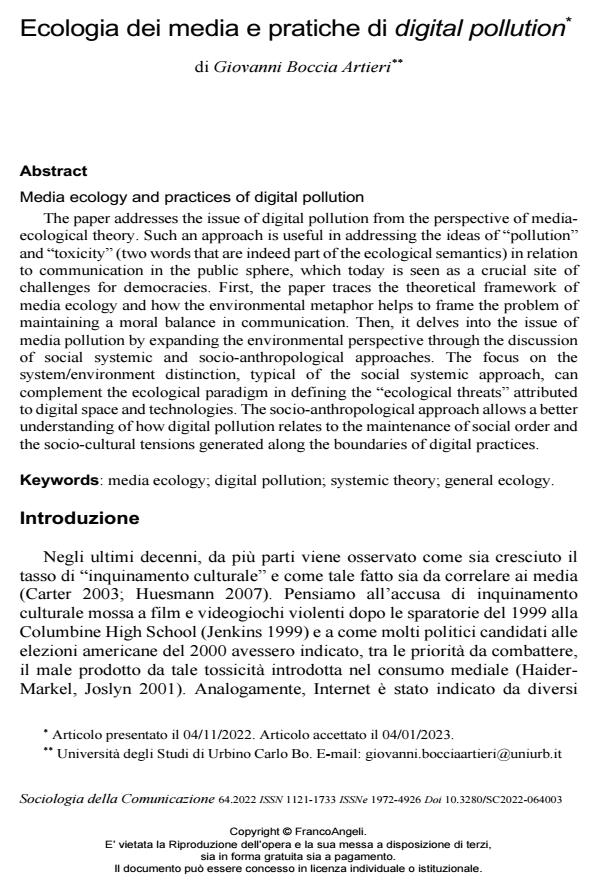Media ecology and practices of digital pollution
Journal title SOCIOLOGIA DELLA COMUNICAZIONE
Author/s Giovanni Boccia Artieri
Publishing Year 2023 Issue 2022/64
Language Italian Pages 16 P. 43-58 File size 299 KB
DOI 10.3280/SC2022-064003
DOI is like a bar code for intellectual property: to have more infomation
click here
Below, you can see the article first page
If you want to buy this article in PDF format, you can do it, following the instructions to buy download credits

FrancoAngeli is member of Publishers International Linking Association, Inc (PILA), a not-for-profit association which run the CrossRef service enabling links to and from online scholarly content.
The paper addresses the issue of digital pollution from the perspective of media-ecological theory. Such an approach is useful in addressing the ideas of "pollution£ and "toxicity" (two words that are indeed part of the ecological semantics) in relation to communication in the public sphere, which today is seen as a crucial site of challenges for democracies. First, the paper traces the theoretical framework of media ecology and how the environmental metaphor helps to frame the problem of maintaining a moral balance in communication. Then, it delves into the issue of media pollution by expanding the environmental perspective through the discussion of social systemic and socio-anthropological approaches. The focus on the system/environment distinction, typical of the social systemic approach, can complement the ecological paradigm in defining the 2ecological threats" attributed to digital space and technologies. The socio-anthropological approach allows a better understanding of how digital pollution relates to the maintenance of social order and the socio-cultural tensions generated along the boundaries of digital practices.
Keywords: media ecology; digital pollution; systemic theory; general ecology.
Giovanni Boccia Artieri, Ecologia dei media e pratiche di digital pollution in "SOCIOLOGIA DELLA COMUNICAZIONE " 64/2022, pp 43-58, DOI: 10.3280/SC2022-064003